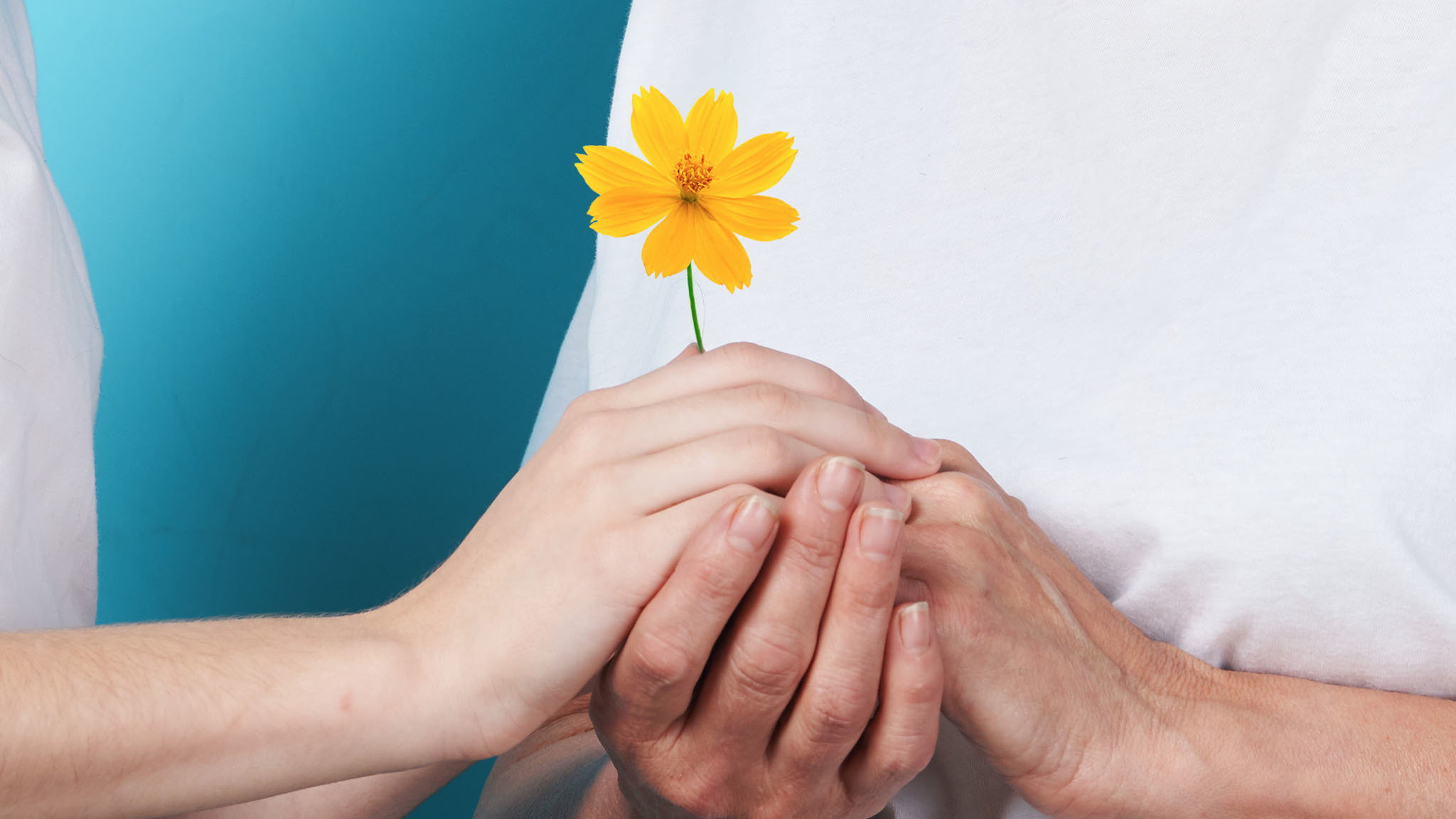Signs Of Loneliness: What To Watch For (And When To Worry)

We all encounter feelings of loneliness from time to time, but despite the experience being incredibly common, the signs of loneliness can vary immensely from person to person based on their gender, age, relationship status, mental health, or personal situation.
- No one is immune to experiencing loneliness at some point during their lifetime and the signs associated with it are not the same from person to person.
- It’s important to recognize the signs of loneliness — in yourself, and others — so the appropriate help can be obtained whenever necessary.
Struggling with loneliness or having a mental health crisis?
- Suicide Prevention Lifeline: 1-800-273-TALK (8255); Deaf or hard of hearing dial 711 before the number or connect via online chat
For instance, the stage of life you’re in can have a major impact on the way you experience loneliness; the signs will manifest quite differently in a child or teenager compared to an adult in middle age.
Regardless of the cause, it’s important to recognize how loneliness presents itself among different populations so you can know what signs to look out for in others — and yourself.
Signs Of Loneliness
Although loneliness is a universal experience and many people find that loneliness is difficult to define — no one is immune — the signs associated with it are not the same from person to person.
Loneliness among those of various genders, ages, or situations may present itself in different ways. With these factors in mind, it’s important to know what to watch for in yourself, and others.
Signs Of Loneliness In Men
Loneliness in men is sometimes referred to as a “silent epidemic.”
It’s believed that loneliness is often underreported in men and likely that they experience loneliness at rates similar to women — we just don’t hear about it.
Regardless, men will often experience loneliness in ways that differ from women.
Common signs of loneliness in men may include:
- Disconnecting from loved ones
- Engaging in risky behavior
- Increased aggression
- Decreased energy and increased fatigue
- Feeling annoyed over minor inconveniences
- Having a low sense of self-worth
- Feeling a loss of “purpose”
- Experiencing frequent boredom or disengagement
- Lacking motivation or being unproductive
- Abusing substances such as alcohol, illicit drugs, or prescription medication
Despite the science that suggests loneliness is common in men, many will avoid discussing their loneliness so they won’t be perceived as “weak” by others.
As a result, loneliness symptoms in men can look different from what you might think of as “typical” signs of loneliness.
It’s particularly important to know that loneliness may show up as aggression, avoidance, or engaging in risky behavior.
Instead of expressing their loneliness outright, lonely men may turn to substances like alcohol to dull feelings of loneliness or they might become increasingly agitated at small issues.
Men have been socialized to express fewer emotions overall; knowing this can help contextualize the signs of loneliness in men.
Signs Of Loneliness In Women
In contrast to men, the signs of loneliness in women are what some might consider as more “typical” but that doesn’t mean they are always overt or obvious, though they may be in some cases.
Common signs of loneliness in women may include:
- Discussing feeling alone or isolated
- Struggling to maintain or make close relationships with others
- Increased social media use
- Having a negative self-image
- Feelings of restlessness
- Experiencing a loss of self-confidence
- Frequently doubting oneself
- Feeling like “everything” is an effort
Women are more likely than men to report feeling lonely, and studies have also shown that women who have fewer close relationships are more likely to feel lonely.
As a result, the signs of loneliness in women often include openly sharing their feelings of isolation and the difficulties they encounter when forging deep connections with other people.
Some women who are deemed “too” attractive by their female peers may be left out of social activities or workplace cliques, which can lead to feelings of isolation.
Women might use social media to cope, even though it is linked to increased levels of loneliness. Instead of feeling connected, they may experience greater isolation as a result of too much social media use.
Lonely women often have a negative self-image, which studies have linked with feelings of life dissatisfaction, unsurprisingly. In turn, this can manifest as feelings of restlessness or apprehension.
- Women Are Often More Lonely Than We Let On
- Why Black Women Are Often Lonely And 6 Ways To Cope
- Loneliness And The Unspoken Expectations Of Black Women
- Beautiful And Lonely: Why Being Pretty Can Often Be A Real Drag
- My Struggle With Lesbian Loneliness In A Heterosexual World
- Loneliness Statistics: By Country, Demographics & More
Signs Of Loneliness In Children
Loneliness in children isn’t uncommon, with one study from the U.K. showing that 11.3% of kids from the ages of 10 to 15 “often” felt lonely.
It’s important to know that kids tend to react to loneliness differently than adults do, and that’s okay.
However, since the signs of loneliness in children are not the same as those in adults, it’s helpful to know what to look out for.
Signs of loneliness in children include:
- Wanting to be close to their parent(s)/guardian(s) at all times
- Acting out to receive attention
- Distractibility
- Having few close friends
- Experiencing bullying or bullying others their age
- Feelings of anxiety or sadness, including depression
- Appearing withdrawn or uncharacteristically moody
- Disruption in their sleep patterns or eating habits
- Declining physical health
- Low self-esteem
- Sudden weight gain or loss
- Suicidal thoughts or a sense of hopelessness
The age of a child will affect the way they cope with and display signs of loneliness.
While a younger only child might become more clingy, an older child or teenager might lash out in frustration as a result of their loneliness.
As a child ages, they may hesitate to share their feelings of loneliness; parents and guardians have to look for more subtle signs of loneliness, such as struggling to make friends or withdrawing from their family.
Environmental factors can play a big role in the loneliness a child feels, so maintaining a level of stability can help ease feelings of loneliness.
Signs Of Loneliness In The Elderly
Loneliness is common at all stages of life, but seniors are prone to loneliness for a variety of reasons.
Whether they feel lonely because they live alone, are struggling with health issues, or are struggling to adjust to a new stage in their lives, loneliness in the elderly is extremely common.
Common signs of loneliness in seniors may include:
- Talking about feeling disconnected from the world around them
- Spending most of their time alone
- Speaking to or engaging with loved ones more or less often — whichever is opposite of their normal behavior
- Frequent feelings of frustration, anger, or annoyance
- Disengaging with hobbies they used to enjoy
- Discussing the present and future in a negative manner
- Changes or decline in physical health
- Sleeping more often
- Eating less or showing little to no interest in food
- Seeking increased physical warmth through frequent baths, warmer air temperatures in the house, or heavier clothing and blankets
Since so many seniors live alone, you might not always be able to see the signs of loneliness immediately.
Many elderly people share that they are feeling lonely with others, albeit indirectly. This may result in talking more (or less) with loved ones, depending on which is in opposition to their typical behavior.
Although many people struggle with regulating their body temperature as they age, a less-recognized sign of loneliness is the tendency to seek increased physical warmth through hot baths, heavier clothing, or warmer air temperatures at home as a substitute for emotional warmth.
Likewise, a decreased interest in food and an increase in the amount of time they spend sleeping may be a sign of loneliness in seniors.
Spending most of their time alone can be both a cause and a sign of loneliness in seniors, too, and this can put them at an increased risk for a variety of health issues.
Reminiscing isn’t a bad thing, but only talking about the past and negatively viewing the present and future can indicate loneliness and dissatisfaction in the elderly.
Aging comes with its challenges, especially once a person enters retirement, but that doesn’t mean the signs of loneliness in seniors should be dismissed or ignored.
Signs Of Loneliness In A Relationship Or Marriage
Marriage can be beautiful, but it can also be lonely, even though marriage as a whole is generally linked to decreased levels of loneliness overall.
Of course, just because you’re married doesn’t mean you won’t feel lonely within your relationship.
Loneliness in a relationship or marriage often presents itself in the following ways:
- Feeling a sense of disconnect with your partner
- Feeling lonely even when you’re with your partner
- Avoiding emotional and/or physical intimacy with your partner
- Feeling unwanted by your partner
- Feeling as if you can’t rely on your partner
- Actively avoiding your partner in favor of other interests
- Changes in your eating or hygiene habits
- Not discussing deep or meaningful issues with your partner
- Experiencing problems in your relationship either as bigger than they really are or as inconsequential
- Not having your emotional needs met by your partner
Signs of loneliness in marriage can emerge in all aspects of your relationship — emotionally, mentally, socially, and even sexually.
As a whole, though, if you’re lonely in your marriage or relationship, you’re probably not feeling a sense of warmth towards or with your significant other.
You might feel so alone that it seems like you’re not even together at all.
It’s important to note that being lonely in a marriage doesn’t mean your marriage is doomed — you can come back from a lonely marriage, including a sexless one.
Likewise, you should know that if you’re lonely in your relationship, it’s likely that your partner is experiencing the same thing.
However, it’s important to be honest with yourself — and with your partner — about what you’re experiencing to take steps towards a more meaningful partnership.
Signs Of Extreme Loneliness
There’s no singular definition of “extreme” loneliness, but chronic loneliness — in addition to loneliness and depression — can be considered extreme due to the ways in which it can deeply affect individuals.
Signs Of Chronic Loneliness
While we all hope that loneliness won’t become a constant, unwanted companion, loneliness can become chronic.
Though the symptoms of chronic loneliness can be similar to temporary or transient loneliness, the latter is brief, resolving itself in relatively short order.
Chronic loneliness, on the other hand, is marked by an extended period of time in which a person struggles with feelings of loneliness, often accompanied by a downward spiral that only deepens those feelings further.
Over the long term, the most frequent signs of chronic loneliness can include:
- Feeling isolated from others over a long period
- Constantly feeling “run down” or fatigued
- Frequently experiencing FOMO (fear of missing out)
- Struggling to make deep, meaningful connections with others
- Perceiving small slights as a cause for major concern; hypervigilance
- Difficulty concentrating
- Disinterest in activities you once enjoyed
- Sleep disturbances or feeling fatigued even with adequate sleep
- Changes in appetite
- Frequently feeling stressed or anxious for seemingly no reason
- Engaging in risky behaviors
- Binge-watching shows or movies
- Decreased sense of self-confidence, self-worth, or self-esteem
When you’re feeling chronically lonely, you might seek methods of escapism, such as spending hours on social media or binge-watching television.
This equates to more than simply vegging out on the weekends to decompress from a tiring week — the behavior reflects a constant need for stimuli to avoid confronting your feelings of loneliness.
Despite the “social” part, social media can make us feel more alone.
If social media is only making you worry about what you might be missing out on to the point where you can’t put the phone down, it might be a sign that you’re chronically lonely.
Additionally, chronic loneliness can make it difficult for you to connect meaningfully with others while making you more likely to perceive rejection or hostility from those around you — even when neither is present.
Appetite changes may cause a person to eat more or less, sometimes to extremes in either direction, as a way of coping with feelings of loneliness.
Other symptoms of chronic loneliness can be physical, such as feeling tired (even when you’re getting enough rest) and struggling to concentrate.
Signs Of Loneliness And Depression
Loneliness and depression are often interlinked, so it’s particularly important to be aware of the overlapping signs between both.
Common signs of loneliness and depression include:
- Fluctuations in weight and appetite
- Mood swings
- Not wanting to participate in activities you usually enjoy
- Experiencing some level of nagging physical pain (constantly, or nearly so)
- Difficulty forming close relationships with others
- Changes in sleep habits (sleeping too much or too little)
- Feeling indifferent about everything
- Experiencing low levels of energy regardless of adequate sleep
Depression, when combined with loneliness, can result in some major disruptions to your life affecting everything from your sleep habits, physical health, energy levels, and state of mind.
Physically, loneliness and depression can make you feel fatigued regardless of the amount of sleep you’re getting each night.
There’s a well-documented relationship between depression and chronic pain, an unpleasant combination that can make you feel more isolated and lonely.
Emotionally, symptoms of depression and loneliness can range from feelings of apathy or indifference to anger and sadness.
Mood swings are also common in depression, which can make it difficult to maintain or create meaningful connections with others. This can further feelings of isolation and loneliness.
A person can be lonely without being depressed and vice versa, but with so many overlapping signs and symptoms, it’s important to be aware of some of the most common signs of both.
When To Be Concerned About Loneliness
In some instances, the combination of loneliness and depression, or loneliness and other mental or physical conditions, can lead to suicidal thoughts or ideations.
If this occurs, it is essential to reach out for help.
This can be difficult, but loneliness and depression can be treated and things can get better — even if it doesn’t feel that way right now.
The following signs of loneliness cause for immediate concern:
- Feelings of hopelessness and despair
- Thinking that there is no point in making plans for the future because things will never get better
- Frequently discussing topics related to death or suicide
- Giving personal items away
- Struggling to get out of bed or get through the day
- Isolating yourself from others, even those who try to connect with you
- Engaging in dangerous behavior
- Feeling a sense of emptiness
If you believe that someone you know is at risk, please take the appropriate steps to ensure their safety.
It’s important to know that there are various resources available to get you or your loved one through the next day, hour, or minute.
And if you or someone you know is in immediate danger (or you worry someone might be), always call 911 or your local emergency number.
If loneliness or depression is leading you toward suicidal thoughts, you can call the Suicide Prevention Lifeline any time, day or night, at 1-800-273-TALK (8255).
If you are Deaf or hard of hearing, you can call that same number using a TTY through your preferred relay service or by dialing 711 before the number, or connect via online chat.
There are additional resources available through the National Suicide Prevention Lifeline’s website.
Closing Thoughts
Even though loneliness is a common emotion and experience shared by many, the signs associated with it can vary greatly.
For this reason, it’s important to know what to look for — in yourself, and others — so appropriate help can be obtained whenever necessary.
This is particularly important for those dealing with long-term, chronic loneliness. Coping with loneliness is possible — even if it doesn’t feel that way right now.
Most (if not all) of us will experience loneliness at some point in our lives and by recognizing the signs, we are far better prepared to help ourselves and those around us when it’s needed most.
Editor’s Note: This article is part of The Roots Of Loneliness Project, the first-of-its-kind resource that comprehensively explores the phenomenon of loneliness and over 100 types we might experience during our lives.
Find Help Now
If you’re struggling with loneliness (or know someone who is), we’ve put together resources to meet you wherever you are — whether you want someone to talk to right now, or are looking for longer-term ways to help.
- Suicide Prevention Lifeline: 1-800-273-TALK (8255); Deaf or hard of hearing dial 711 before the number or connect via online chat
- Resources & Emotional Support For Loneliness
- Volunteer & Pet Adoption Opportunities


